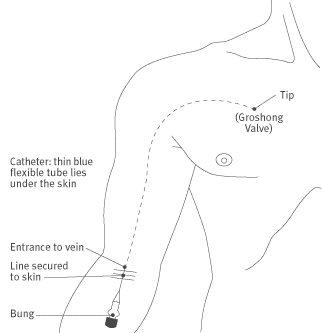Search
Never Event #2: Infection In Central Venous Catheters
The second most frequently encountered ‘never event’ is an infection from a central venous catheter. Infections due to improperly maintained and inplanted central venous catheters accounted for 29,536 cases in hospitals in 2007. A central venous catheter is a tube usually inserted in an arm or chest and threaded through a vein until it reaches a large vein close to the heart. Central venous catheters are used to administer medication, supply nutrition or blood products.
There are three main types of central venous catheters:
- PICC Line: A ‘peripherally inserted central catheter.’ PICC’s are the most common type of central venous catheter accounting for more than 50% of the vascular catherizations because it may be inserted relatively easily. PICC’s are inserted into a vein in the arm as opposed to the neck or chest.
- Tunneled Catheter: A surgically inserted catheter in the neck or chest and is passed under the skin. Only the end of the catheter is visible through the skin. Passing the catheter under the skin allow people greater mobility and helps the catheter stay in place.
- Inplanted Port Catheter: Similar to the tunneled catheter, but the entire catheter is left under the skin. Medication must be injected through the skin and into the catheter.
More than 40% of bloodstream infections are accounted for in people with central venous catheters. An estimated 1% to 5% of people with central venous catheters who get an infections die from them. In order to reduce the likelihood of infection, the following should be done:
- Use sterile technique when working with a person who has a central venous catheter.
- Clean the exposed area of the catheter on a regular basis.
- Dressings should be changed at a minimum of every week.
- The catheter should be flushed regularly.
- The exposed end of the catheter should be routinely check for inflammation and discoloration–the early signs of a potential infection.
Basic maintenance and observation should be part of all hospital and nursing home patients routine. If you have acquired a blood infection during your hospital or nursing home stay, do not assume that your condition was inevitable.
 Nursing Home Law News
Nursing Home Law News

